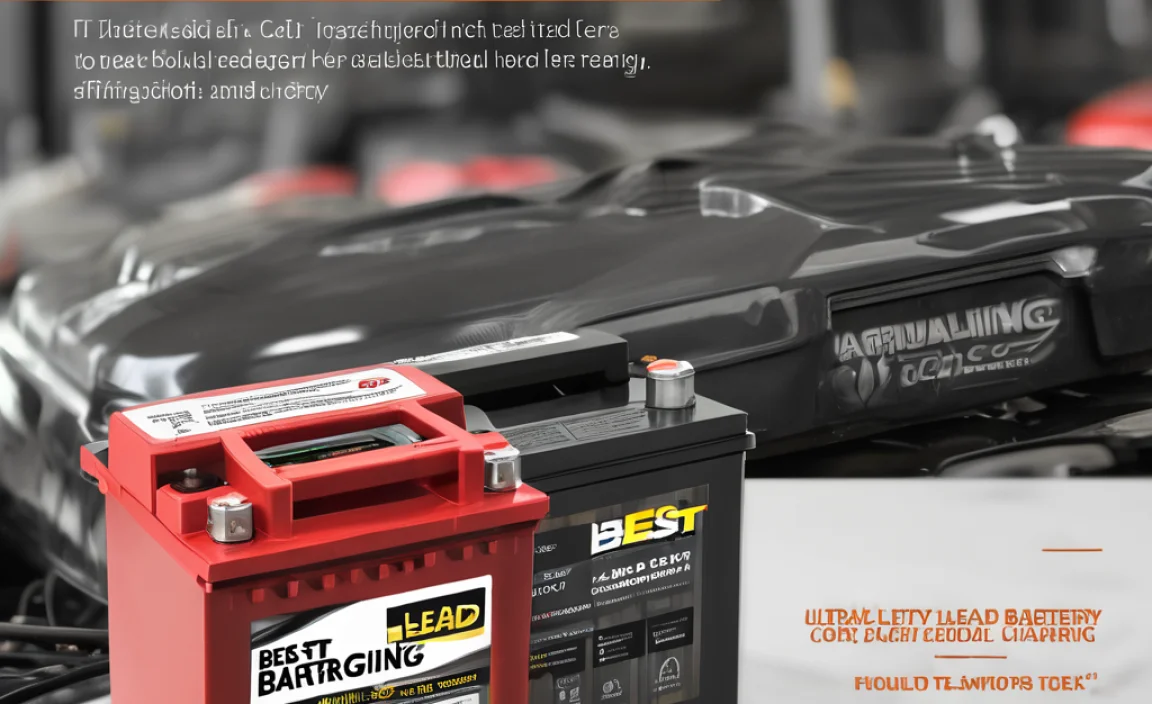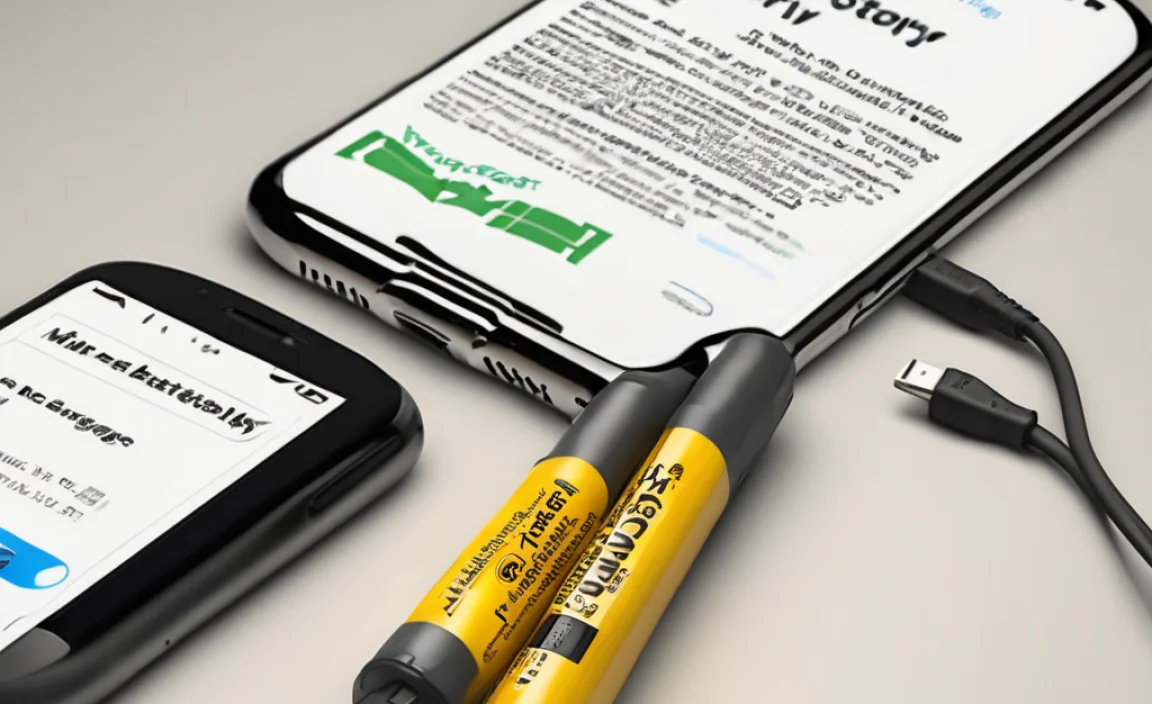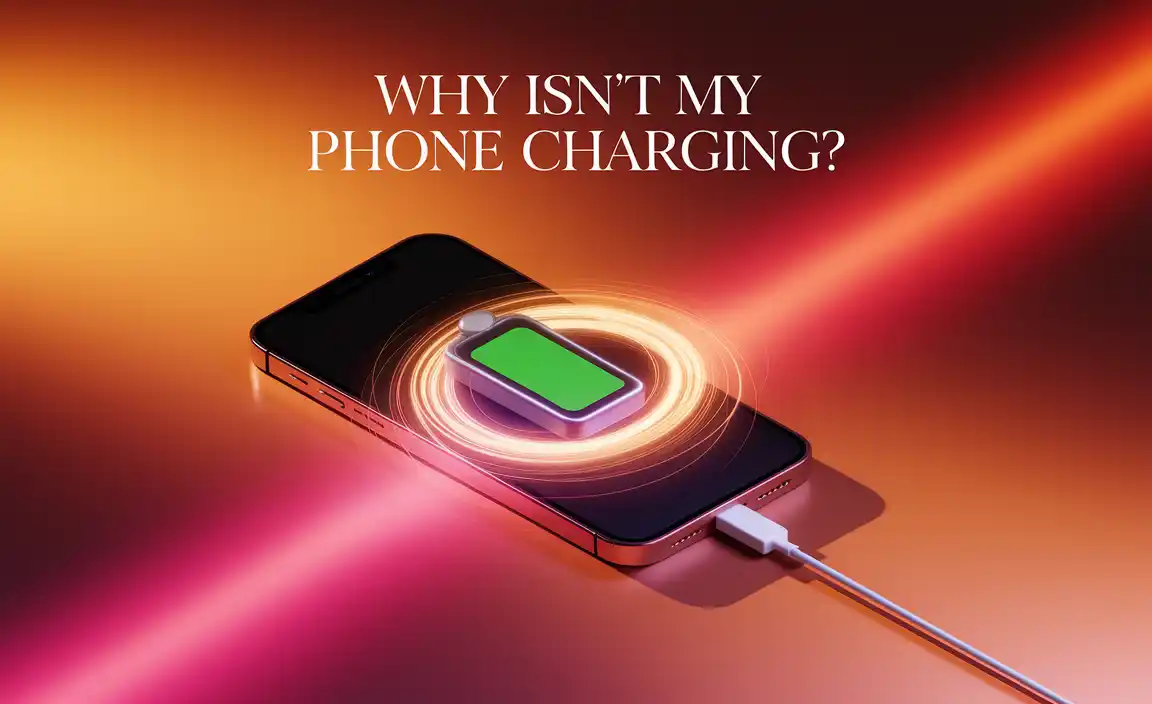Quick Summary: Keep your Canon camera powered up with rechargeable batteries! Learn how to choose, use, and care for them to avoid running out of juice during important moments. Simple tips to ensure you’re always ready to capture memories.
Rechargeable Canon Camera Battery: Essential Power for Every Shot
Ever been in the middle of capturing a perfect moment, only to see that dreaded low battery notification? It’s frustrating, right? Especially with a Canon camera, a tool designed for incredible photos. Thankfully, rechargeable batteries are your best friend here. They save you money and hassle. This guide will show you everything you need to know about keeping your Canon camera powered up and ready to go. We’ll cover picking the right ones, using them safely, and making them last. Get ready to say goodbye to battery anxiety!
Why Rechargeable Batteries Are a Photographer’s Best Friend
Think about how many disposable batteries you’ve gone through for cameras, remote controls, or toys. It adds up! Rechargeable batteries offer a smarter, more eco-friendly, and cost-effective solution, especially for a device you rely on like your Canon camera.
Here’s why they are a must-have:
- Cost Savings: While the initial purchase might be a bit more, rechargeable batteries pay for themselves very quickly. You won’t be constantly buying new ones.
- Environmental Impact: Reducing waste from disposable batteries is a big win for the planet. Less trash in landfills means a happier Earth.
- Convenience: Keep a charged spare handy. This means you’re far less likely to miss a crucial shot because your main battery died.
- Consistent Performance: Modern rechargeable batteries offer reliable power, giving you consistent performance for your photography needs.
Understanding Your Canon Camera Battery Options
When it comes to powering your Canon camera, there are a few types of batteries to be aware of, but for modern digital cameras, you’ll primarily be dealing with rechargeable lithium-ion (Li-ion) batteries designed specifically for your camera model.
Proprietary Canon Batteries vs. Third-Party Options
Most Canon cameras use proprietary batteries, meaning they are made by Canon and designed to fit and function perfectly with your specific camera. These are often labeled with a Canon model number (like LP-E6, LP-E10, NB-13L, etc.).
Proprietary Canon Batteries:
- Pros: Guaranteed compatibility and performance. Usually built to the highest quality standards for your specific camera.
- Cons: Can be more expensive.
Third-Party Batteries:
There are many companies that make batteries designed to work with Canon cameras. These can be a good option if you’re on a budget.
- Pros: Often significantly cheaper than official Canon batteries.
- Cons: Quality can vary widely. Some may not last as long, hold a charge as well, or communicate perfectly with your camera (meaning you might not get an accurate battery level indicator). It’s important to buy from reputable brands.
Our Recommendation: If budget allows, stick with official Canon batteries for guaranteed performance and safety. If you opt for third-party, do your research! Look for brands with good reviews and clear specifications that match your Canon model. Always check if they are advertised as being compatible with your specific camera model.
Key Specifications to Look For
When comparing batteries, especially after-market ones, pay attention to these details:
- Voltage (V): This must match your camera’s requirements exactly. Using the wrong voltage can damage your camera.
- Capacity (mAh – milliampere-hour): This tells you how much power the battery holds. A higher mAh generally means longer shooting time per charge.
- Compatibility: Ensure the battery is explicitly listed for your Canon camera model.
Choosing the Right Rechargeable Battery for Your Canon Camera
The most important rule is to use a battery specifically designed for your Canon camera model. Using the wrong type of battery is the quickest way to damage your camera or, at best, have a battery that simply doesn’t work.
Step 1: Find Your Camera’s Battery Model Number
This is usually found in your camera’s user manual. You can also look at the old battery itself – the model number will be printed on it (e.g., LP-E17, LP-E8, NB-6LH). Another way is to search online for your specific Canon camera model followed by “battery replacement.”
Step 2: Decide Between Official Canon and Third-Party
- Official Canon: Offers peace of mind and guaranteed performance. The safest bet if you want to avoid any potential issues.
- Third-Party: Can be a cost-effective choice. Research reputable brands known for good quality and reliability. Websites like B&H Photo Video or Adorama often have customer reviews that can help you decide.
Step 3: Check Specifications Carefully
Ensure the voltage and any other specified power ratings match what your camera needs. A higher mAh is generally better if it’s from a reliable source, as it means more shots between charges.
Essential Tools: Battery Charger and Maintenance
A great battery needs a great charger. And a little care goes a long way in keeping your batteries performing well for years to come.
Choosing the Right Charger
Your Canon camera will likely come with its own dedicated battery charger. Using this is always the best and safest option.
- Official Canon Chargers: Designed by Canon to safely charge their specific battery types. They have the correct charging profiles to prevent overcharging and ensure battery longevity.
- Third-Party Chargers: If you lose your original charger or need a spare, reputable third-party chargers can be used. Look for ones that specifically state they are compatible with your battery model (e.g., “for LP-E6 batteries”). Some multi-battery chargers can charge several types of batteries at once. Again, research is key.
Why Using the Right Charger is Crucial
Using an incorrect charger can lead to:
- Overcharging: This can damage the battery, reduce its lifespan, and even pose a fire risk.
- Undercharging: The battery may not reach its full capacity, giving you less shooting time.
- Damage to Battery Contacts: A poorly fitting charger can damage the delicate metal contacts on the battery.
Battery Care and Maintenance Tips
Treat your rechargeable batteries well, and they’ll treat you well in return.
- Avoid Extreme Temperatures: Lithium-ion batteries don’t like being too hot or too cold. Don’t leave them in a hot car or a freezing bag. Store them in a cool, dry place.
- Don’t Fully Discharge Regularly: Unlike older battery technologies, Li-ion batteries don’t suffer from “memory effect.” It’s actually better to recharge them when they are partially depleted rather than waiting for them to die completely.
- Store Properly: If you’re storing a battery for an extended period (months), charge it to about 50-60%. Don’t store them fully charged or completely empty for long durations.
- Keep Contacts Clean: Gently wipe the metal contacts on the battery with a clean, dry cloth or a pencil eraser if they look dirty. This ensures a good connection with the charger and camera.
- Use the Right Charger: We can’t stress this enough! Always use the charger specifically designed for your battery type or a well-reputed, compatible third-party charger.
- Periodic Check-ups: Inspect your batteries regularly for any signs of swelling, leakage, or damage. If you see any, stop using the battery immediately and dispose of it safely. Battery recycling programs are available at many electronics stores and municipal waste facilities.
How to Charge Your Canon Camera Battery Safely
Charging your battery is straightforward, but a few safety tips will ensure everything goes smoothly.
Step-by-Step Charging Guide:
- Ensure You Have the Correct Charger: Confirm the charger is the official one for your Canon battery model or a certified compatible third-party charger.
- Connect the Charger: Plug the charger into a reputable wall outlet. Avoid using extension cords if possible, or ensure they are heavy-duty and in good condition.
- Insert the Battery: Open the battery cover on your charger and carefully insert the Canon camera battery. Ensure it clicks or slides into place securely. Pay attention to the orientation – batteries only fit one way.
- Observe Charging Indicators: Most chargers have an LED light that indicates charging status.
- Orange/Red Light: Usually means the battery is charging.
- Green/Blue Light or Flashing Light: Often indicates the battery is fully charged or charging is complete/in maintenance mode.
Refer to your charger’s manual for exact indicator meanings.
- Wait for Full Charge: Allow the battery to charge completely. This can take anywhere from 1 to 3 hours, depending on the battery size and charger.
- Remove the Battery: Once fully charged, safely remove the battery from the charger.
- Insert into Camera: Place the fully charged battery into your Canon camera, ensuring it’s properly seated, and you’re ready to shoot!
Safety First When Charging
- Never Use a Damaged Charger or Battery: If the charger’s cord is frayed or the battery looks swollen or damaged, do not use them.
- Charge in a Safe Area: Charge batteries on a hard, flat, non-flammable surface away from any combustible materials.
- Don’t Leave Unattended for Extended Periods (Especially with Older/Third-Party Chargers): While modern chargers and batteries are very safe, it’s always good practice to monitor the charging process, especially if you’re using a new or third-party charger for the first time.
- Unplug When Not in Use: Once the battery is charged, unplug the charger from the power outlet.
Maximizing Battery Life During Shoots
Running out of power when you’re out and about is a bummer. Here’s how to make your rechargeable Canon battery last longer during a photo session:
Simple Tips for Longer Shooting Times
- Reduce Screen Brightness: The LCD screen uses a lot of power. Lowering its brightness can make a noticeable difference.
- Turn Off Image Review: Every time you take a photo, the screen lights up to show you the resulting image. Disabling this automatic review feature can save significant battery power. You can check your shots later.
- Limit Live View Usage: Using the LCD screen to compose your shots (Live View) is a major power drain compared to using the optical viewfinder. Use the viewfinder whenever possible.
- Turn Off Wi-Fi/Bluetooth When Not Needed: If your camera has wireless connectivity, ensure it’s turned off when you’re not actively using it to transfer files or control the camera remotely.
- Carry a Spare Charged Battery: This is the most foolproof method! Have a second fully charged battery ready to swap in when the first one gets low.
- Avoid Frequent Power On/Off Cycles: Turning the camera on and off repeatedly uses more power than leaving it on in standby mode.
- Use a Battery Grip (for compatible cameras): If your Canon camera supports a battery grip, it can hold an extra battery, effectively doubling your shooting time.
Troubleshooting Common Battery Issues
Even with the best care, you might run into a few battery-related hiccups. Here’s how to tackle them.
Battery Not Charging
If your battery isn’t charging, try these steps:
- Check Connections: Ensure the charger is plugged in securely to the wall outlet and the battery is correctly seated in the charger.
- Clean Contacts: Gently clean the metal contacts on both the battery and the charger with a dry, lint-free cloth or a pencil eraser.
- Try a Different Charger/Battery: If possible, try charging your battery with a known working charger, or try charging a different battery with your charger. This helps identify if the problem is with the battery or the charger.
- Inspect for Damage: Look for any visible signs of damage on the battery or charger.
Camera Shows Battery as Empty or Incorrectly
This can sometimes happen, especially with third-party batteries.
- Re-seat the Battery: Remove the battery from the camera and reinsert it, ensuring it’s properly locked in place.
- Firmware Update: Check Canon’s support website for your camera model to see if a firmware update is available. Sometimes, firmware updates improve battery recognition and compatibility.
- Reset Camera Settings: Occasionally, resetting your camera to factory default settings can resolve minor glitches. (Note: This will erase any custom settings you’ve made.)
- Consider an Official Battery: If the issue persists, especially with a third-party battery, it might not be fully compatible. An official Canon battery might be the solution.
Battery Dies Too Quickly
If your battery life seems shorter than usual:
- Check Usage Habits: Review the tips in the “Maximizing Battery Life” section. Are you using Live View excessively? Is Wi-Fi always on?
- Battery Age: Rechargeable batteries have a finite lifespan. After a few years and hundreds of charge cycles, their capacity naturally diminishes. If your battery is several years old, it might simply be worn out.
- Extreme Temperatures: Have you been shooting in very cold or very hot conditions? This can temporarily reduce battery performance.
- Background Processes: Some cameras have background processes (like GPS logging or constant searching for Wi-Fi signals) that drain power even when the camera is off. Check your camera’s menus for these settings.
Battery Disposal and Recycling
When a rechargeable battery reaches the end of its life, it’s important to dispose of it responsibly.
Why Proper Disposal Matters:
- Rechargeable batteries, especially lithium-ion, contain materials that can be harmful to the environment if they end up in a landfill.
- Recycling allows valuable components to be recovered and reused, reducing the need for new material extraction.
How to Recycle:
- Look for Recycling Centers: Many electronics stores (like Best Buy), home improvement stores, and local government waste management facilities offer battery recycling drop-off points.
- Call2Recycle: This is a North American leader in battery recycling. You can find drop-off locations near you on their website: www.call2recycle.org.
- Never Put in Regular Trash: Do not discard used batteries in your household garbage bin.
Rechargeable Battery Specs Comparison
For common Canon camera batteries, here’s a look at typical specifications. These can vary slightly between official and third-party options.
| Battery Model | Typical Voltage (V) | Typical Capacity (mAh) | Commonly Used In (Examples) |
|---|---|---|---|
| LP-E6 / LP-E6N / LP-E6NH | 7.2V – 7.4V | 1800 – 2700 mAh | EOS 5D Mark II/III/IV, 6D, 7D, 70D, 80D, 90D, R5, R6 |
| LP-E8 | 7.2V | 1120 mAh | EOS Rebel T2i, T3i, T4i, T5i (e.g., 550D, 600D, 650D, 700D) |
| LP-E10 | 7.4V | 800 mAh | EOS Rebel T3, T5, T6, T7 (e.g., 1100D, 1200D, 1300D, 2000D) |
| LP-E17 | 7.2V – 7.5V | 1000 – 1300 mAh | EOS Rebel T6i, T7i, SL1, SL2, SL3
|



